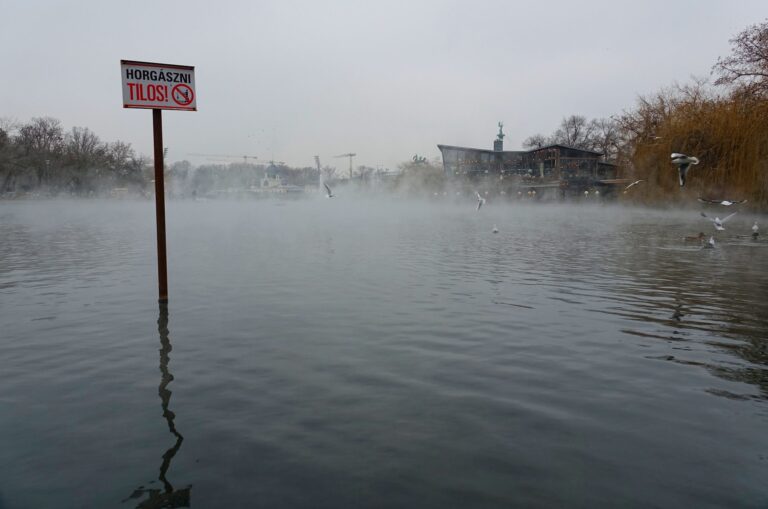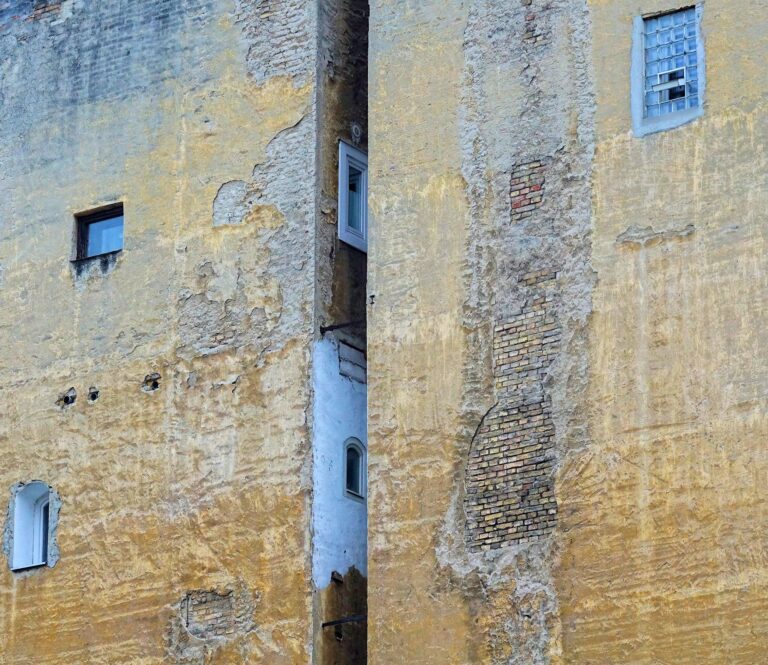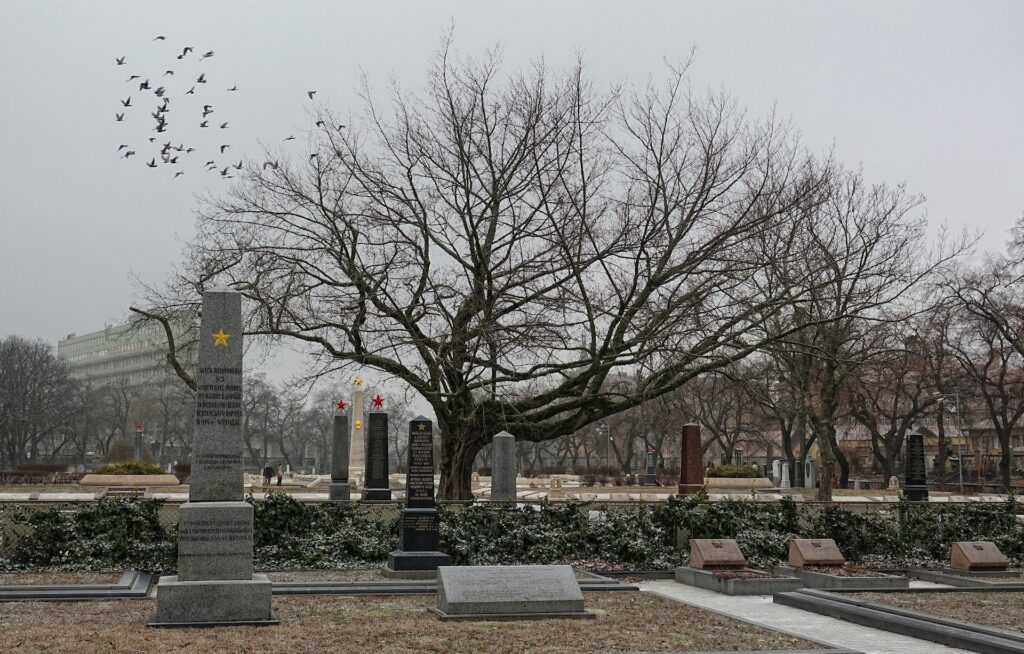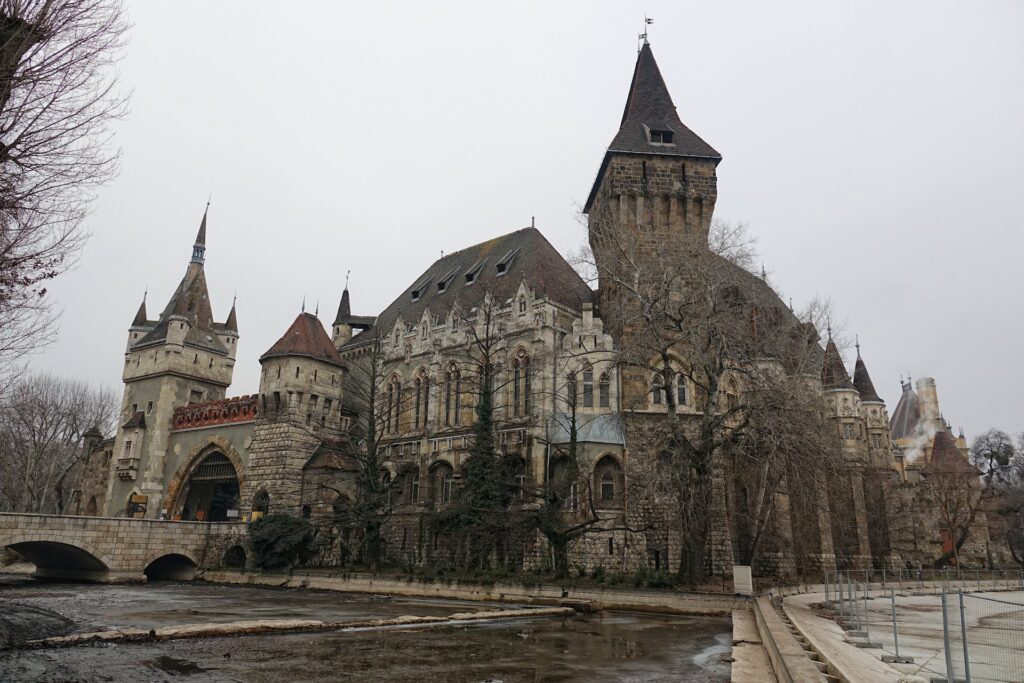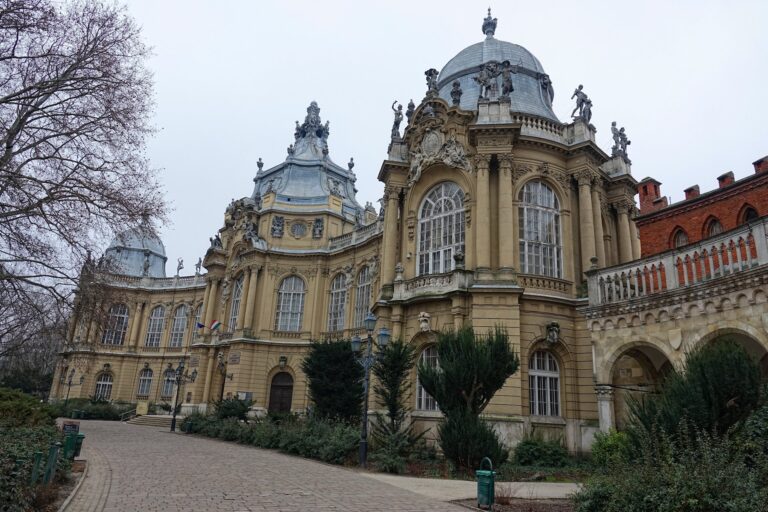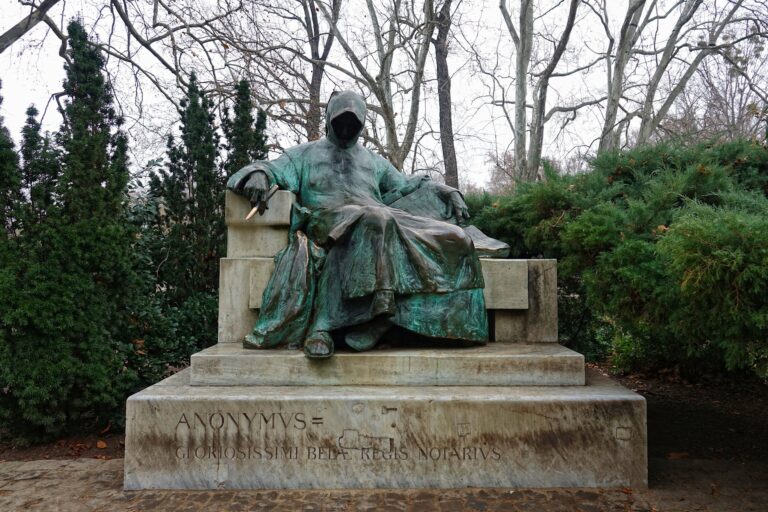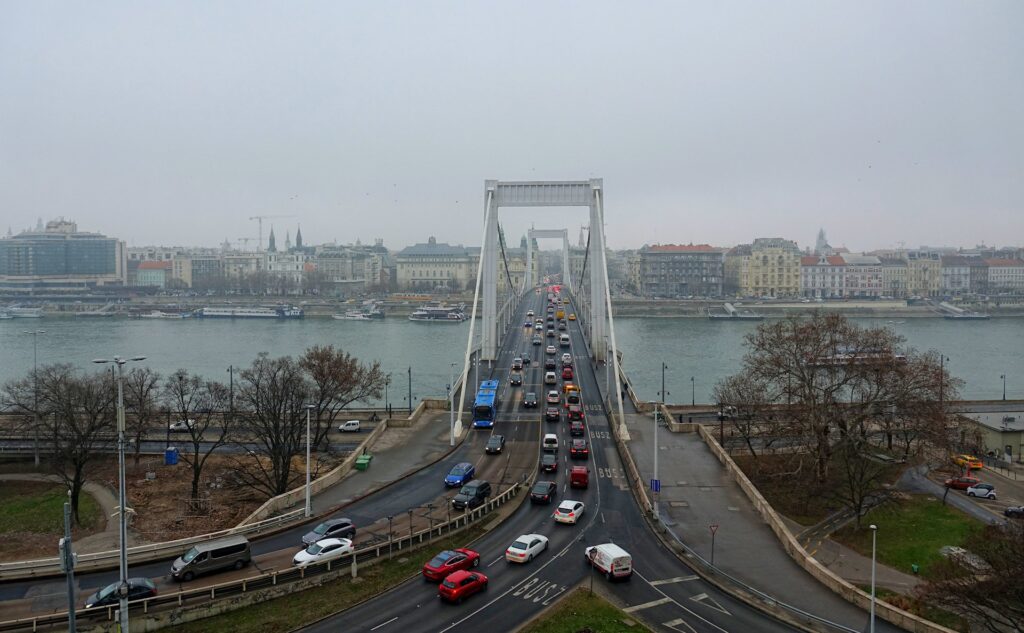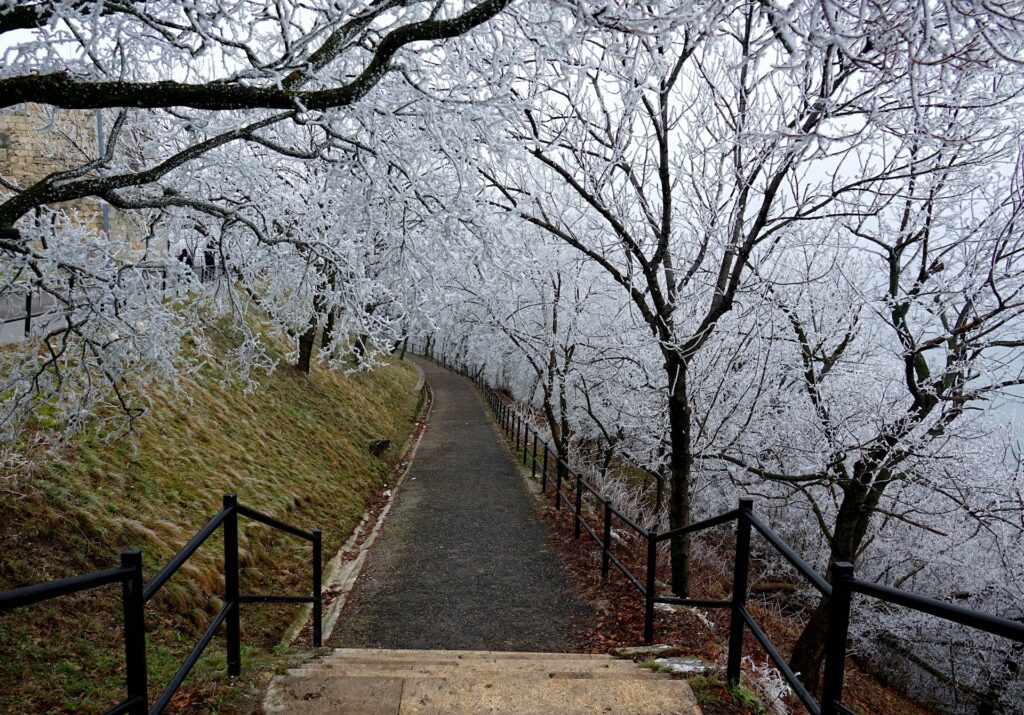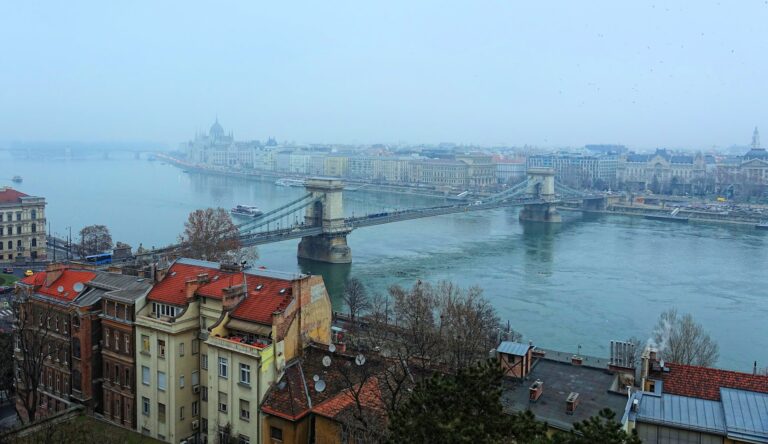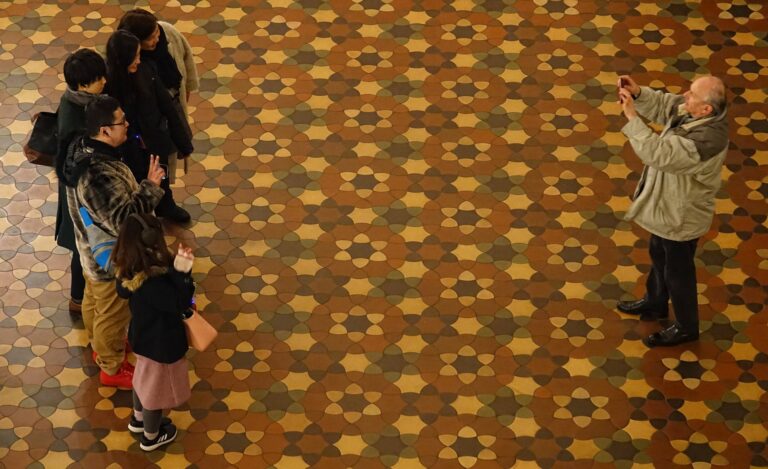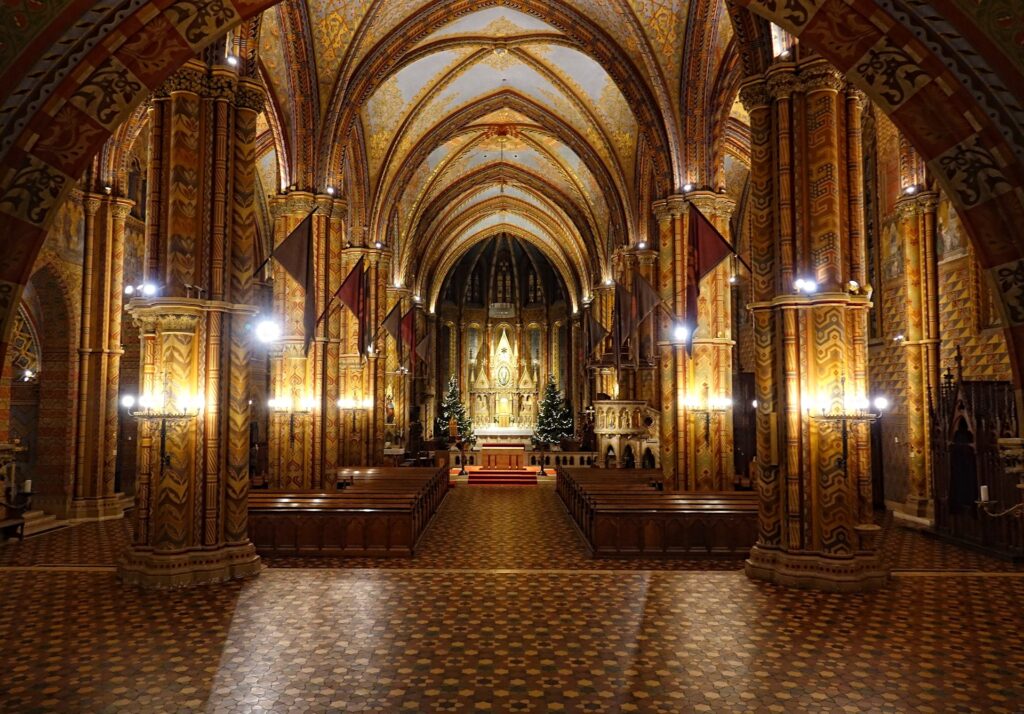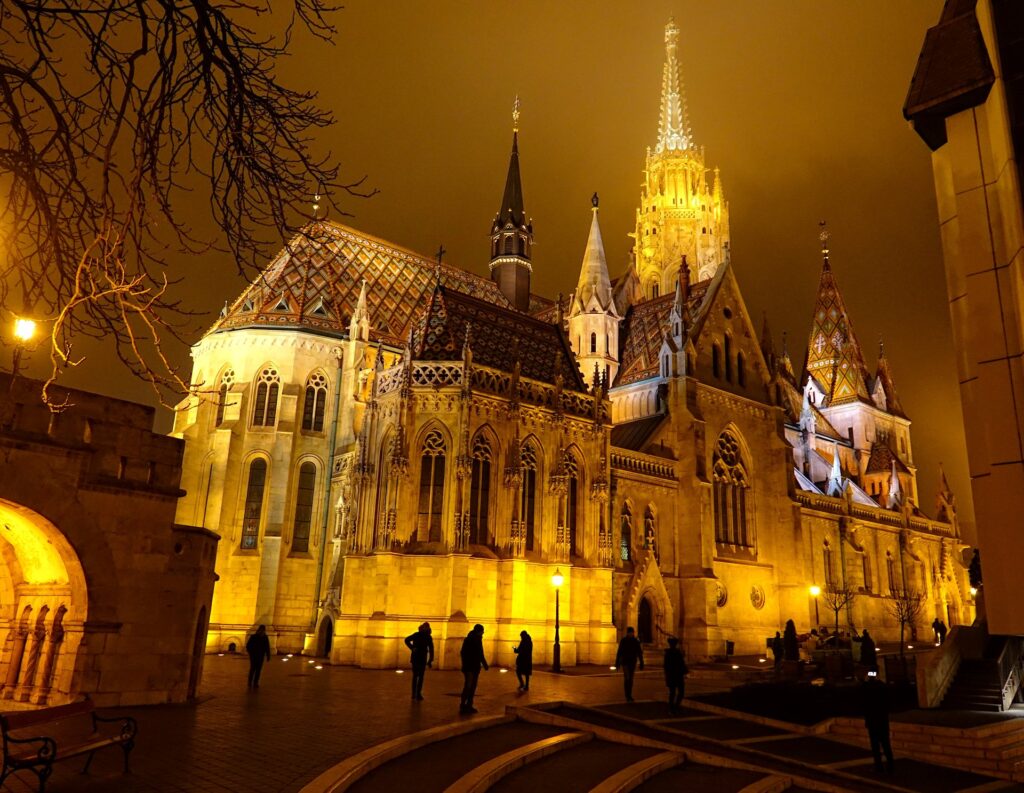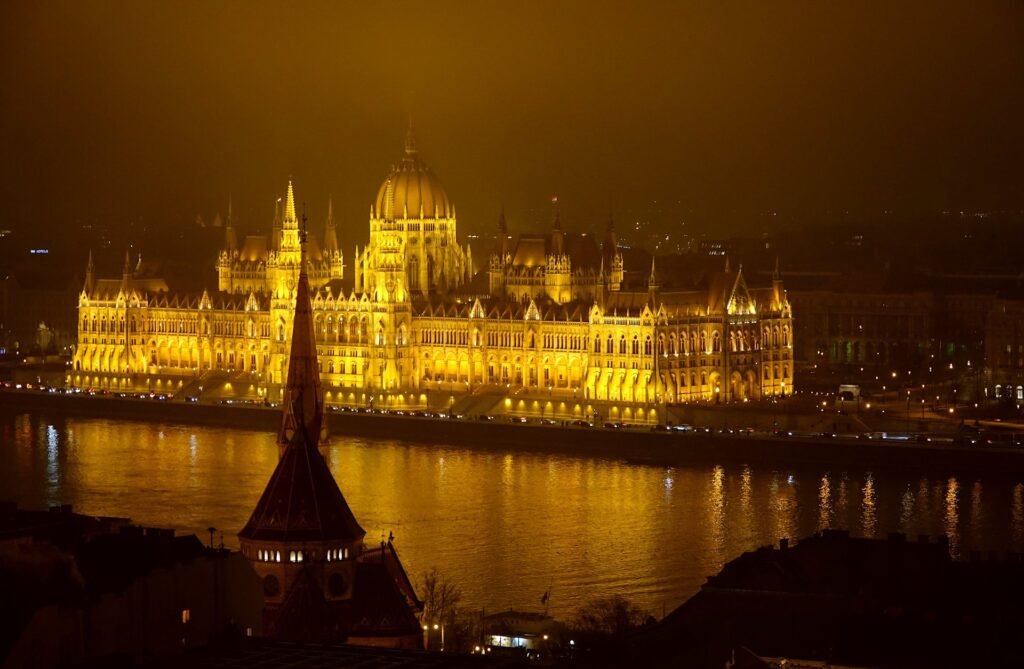The capital of Hungary is estimated to have operated as a city for two millennia now. The many old towers and spires certainly gives it a touch of old.
However, most of what we see as visitors to Budapest is “merely” 250 years or so old. There’s still enough to fill a week with happy sight-seeing, especially during summer. We’re visiting during a pretty cold January, so we will limit ourselves to a single, full day this time.
Despite being far away from any ocean, many come to Budapest to swim. The area is full of naturally heated thermal baths, and visiting them is just like going to any normal pool. We choose the Gellert Bath, a large spa/hotel combo that oozes of old style and old locker rooms.
Photographing inside the bathing area is not particularly encouraged, so instead, here’s a random hot lake we walk past. Do treat yourself to an extended morning bath, and preferably be there when they open early in the morning. Later in the day, the pools will be full of humans and their inevitable noise.
After the bath we walk from the Gellert complex across Liberty Bridge, grabbing what we need for a quick breakfast at the large Central Market Hall. We continue walking north-east through the Józsefváros and Magdolna Quartier districts. This is a central residential area, more than a business district.
Budapest has more than its fair share of magnificent buildings, but there are also many that are in less than perfect shape. We see examples of both kinds as we walk a good number of blocks.
Eventually we arrive at the Kerepesi Cemetery, Hungary’s “national graveyard”. Many famous people you’ve never heard about rest here indefinitely. It doesn’t matter if the names are unknown; tombstones and statues demonstrating grief and mourning are universally understood.
Among the graves is the final resting place of Lujza Blaha, “Hungary’s nightingale”. A hundred thousand people came to her funeral, including a gypsy band counting 200 musicians. For a funeral, it must have been a particularly lively event. This morning it’s all quiet, but a colorful bouquet of flowers is a welcome visual explosion at this stone monument on a gray winter day.
Some graves are simply on a different scale than the rest. Here’s Lajos Kossuth’s mausoleum, with guardian lions and everything. He was a hero of one of the many revolutions around Europe in 1848, bringing Hungary out of the hands of the Austrian monarchy and into something similar to a democracy. Now, he’s just an example of how each era has its own heroes.
Another example is this plot, where soldiers from the Soviet years are remembered. Yellow and red stars on the graves show that a large number of young men and women from all over the Soviet Union were sacrificed in Hungary to keep Communism in one of its ugliest shapes alive.
Not a happy memory, but certainly one worth keeping fresh in mind.
Half an hour’s walk north of the cemetery is Városliget, City Park. The main attraction here is Városliget Castle, one of the strangest architectural wonders of the world. Built just over a hundred years ago, it was part of an exhibition celebrating the millennium of the Hungarian conquest of the Carpathian Basin.
It consists of a jumble of copies of landmark buildings from all around Hungary, popular with both domestic and international tourists. Have a long, good look around here.
Part of the Városliget complex is this baroque masterpiece. It may look like a fancy royal castle, but it’s actually the Museum of Hungarian Agriculture. I dare you to find a more impressive of its kind anywhere else. I’m not going to lie, though; the exterior is far more interesting than what you find inside, maybe except for their huge collection of antlers.
At first I’m impressed by the modernity of an Anonymous status in City Park. Sadly, it turns out not to be in honor of the hacktivist group fighting against governments, corporations and Church of Scientology. As early as in the 12th century, Hungary had their own Anonymous, a chronicler of king Bela III. He is deemed mysterious enough to have earned this cool statue.
We walk back towards the city center, admiring the many grandiose buildings along Andrassy Avenue. The photo shows the cityscape around Oktogon metro station, where Andrassy Avenue meets Grand Boulevard.
The streets of Budapest do not get much fancier than this, manifested by the presence of many expensive designer stores. The entire length of Andrassy Avenue is recognized by UNESCO as a World Heritage Site for its “outstanding urban landscape”.
Thirty minutes later we reach Elisabeth Bridge, on which we cross the river Danube, from Pest to Buda. All in all, there are 14 bridges in crossing the river in Budapest, and this is one of the ugliest. It used to be pretty, but during World War II it was destroyed, and the post-war budgets of Hungary did not allow for much style. It does its job well, though.
The reason we cross the river is to go up on Gellert Hill, another part of the Budapest World Heritage Site. It’s yet another expansive city park, bordered by several embassies and ambassadorial residences. At the top of the hill there’s a citadel, which nowadays is no longer in use for military purposes. Instead there are cafes, art exhibitions, and several excellent viewpoints.
Walking up the hill, we suddenly reach an altitude where frost is able to form on the trees. It’s beautiful, almost like a cherry blossom, only much colder.
At the peak of Gellert Hill we find the Liberty Statue, a striking monument to peace. It originally had an inscription that said something along the lines of “Thank you very much from the Hungarian people to the Soviet heroes in the Red Army for liberating us”.
As soon as the iron curtain came down, in 1989, that text in Russian was removed, and the Hungarian text was changed to a thank you to those who sacrificed their lives for the independence, freedom, and prosperity of Hungary. It remains a fairly violent monument; a suitable reward for climbing the many steps from the river and up here. That, and the view.
The park has many trails, and we follow one that takes us down from the hill and north along the Danube. We soon approach the Széchenyi Chain Bridge. This bridge was also completely destroyed during World War II, but as a matter of national pride, the Hungarians managed to find money to rebuild it in the original style.
Once more we climb up many stairs, this time to Buda Castle, for a better view of the bridge. It nicely matches the parliament building and the splendid 1800s waterfront across the river.
Further along at the top of Buda Castle Hill, we pass many perfectly restored medieval streets, leading up to another highlight: The Matthias Church.
After its construction, lasting from the 11th to the 13th century, many different armies passed through and damaged this magnificent building; the Mongols, the Ottomans, the Jesuits, the Nazis, and the Red Army, just to name the most significant ones. Not the best place to put a church, one could say.
When the end result is this, I guess it’s okay after all.
The most recent restoration of the church was completed in 1970. When you head inside, that’s fairly obvious.
The tiles on the floor are easily inspired by the psychedelic wallpapers from the time of happy hippies.
That said, the interior of the Matthias Church is a real treat for the eyes. So many colors, so many patterns, and so much history behind it all. There’s a moderate fee to enter the church outside “church business hours”, and I find it well worth the expense.
By the time we’re done exploring the church, sunset has come and gone.
The old town outside looks even better when showered in artificial light. This area is known as the Fisherman’s Bastion. With its Disney-like appearance and the great views of the Budapest city center, it’s a tourist favorite, especially at the end of the day. Even on just a brief visit to the city, getting up here for at least a couple of hours should be your priority.
From the Fisherman’s Bastion, you get the best possible view of the Országház, the Hungarian Parliament Building. It’s a good example of what you can achieve if you have 100,000 workers at your disposal for eight years, and you use them to put in place 40 million bricks, half a million precious stones and 40 kilograms of gold.
From here it’s a steep walk down to the river, followed by a cold crossing of the water to get back to our hotel. A more comfortable option is to return to the square in front of the Matthias Church, where buses frequently leave for the city center.
So we do that, and this concludes this visit to Budapest. Always a pleasure.
